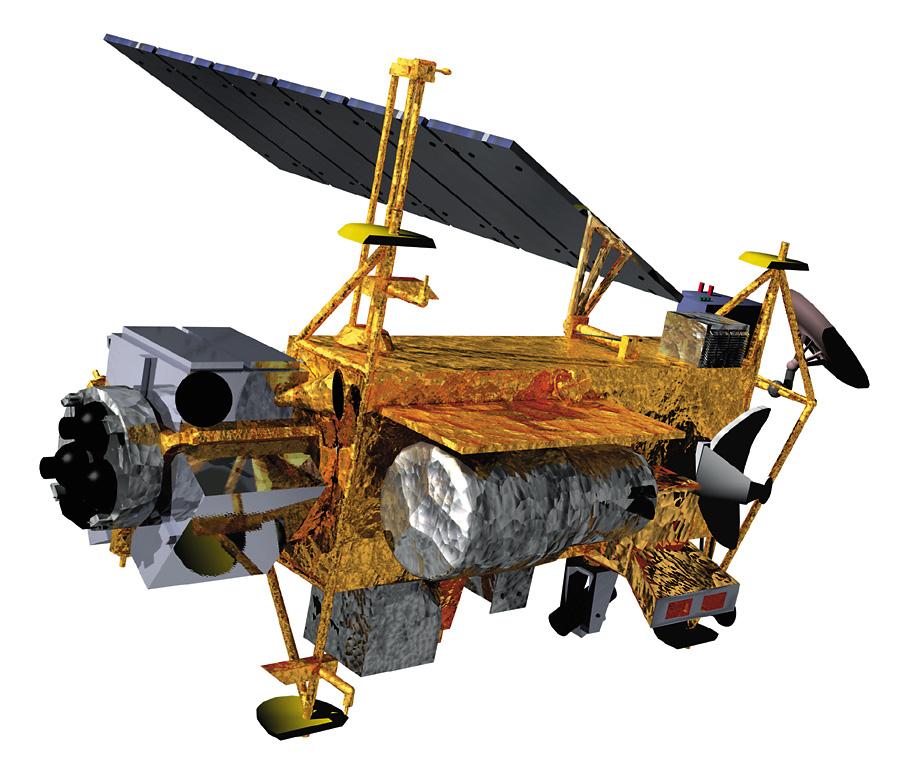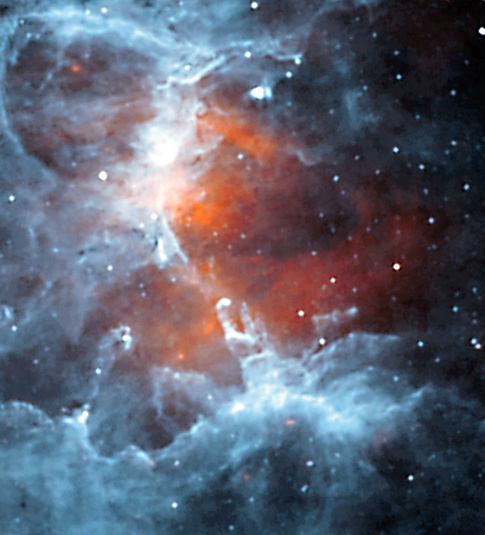Space Operations Institute
The Space Operations Institute, established at Capitol Technology University in 2002 (then Capitol College) with a grant from the National Aeronautics and Space Administration, was a consortium of NASA, industry, government, and education partners. The cooperative agreement formally ended in May 2013, although the spirit and legacy of the SOI lives on in the new CubeSat-focused programs of the Astronautical Engineering department.
Click here to learn more about the legacy of the Space Operations Institute.
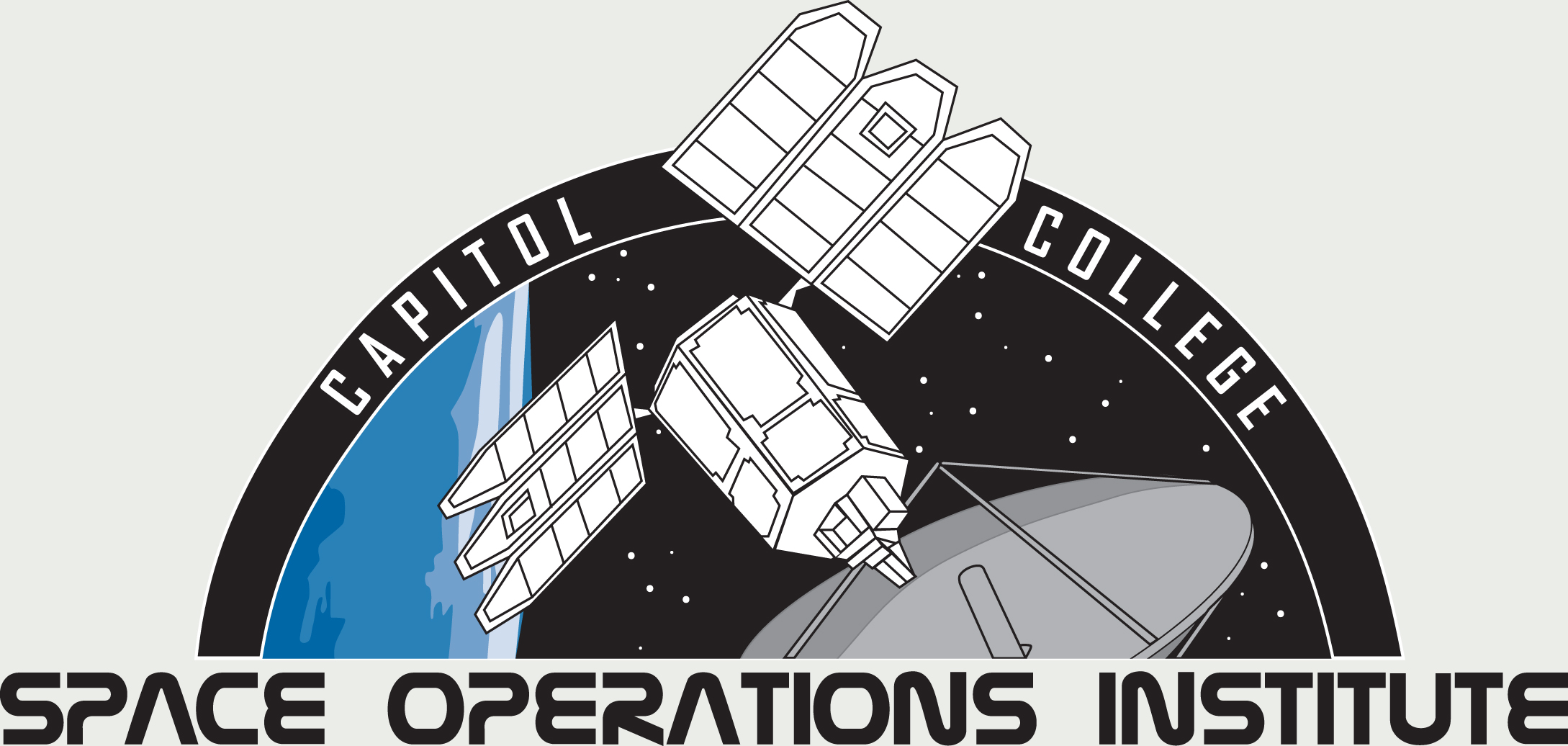
SOI History
The Space Operations Institute, established at Capitol Technology University in 2002 (then Capitol College) with a grant from the National Aeronautics and Space Administration, was a consortium of NASA, industry, government, and education partners. The cooperative agreement formally ended in May 2013, although the spirit and legacy of the SOI lives on in the new CubeSat-focused programs of the Astronautical Engineering department.
The SOI combined the infrastructure necessary to manage satellite operations with an educational program that prepared students for careers in all aspects of space mission operations. The SOI built upon Capitol’s established engineering foundation and worked closely with NASA to understand the aerospace industry’s changing skill requirements. As they provided service in NASA and industry sponsored co-op positions (as early as their freshman year), they gained practical experience that supplemented their academic learning.
Whether working in one of the NASA satellite control centers or development labs, on campus in the Backup Mission Operations Center, or down the road at NASA Goddard Space Flight Center, 138 students in the SOI program had a direct line into the small, exclusive world of highly qualified aerospace professionals. Capitol Technology University continues to provide this path directly to the NASA community through new programs.
Read More about NASA's profile on the SOI.
Learn About the Legacy of the Space Operations Institute
For more information, contact soi@captechu.edu.
Note: The SOI is no longer operating in the below capacity as of 2013. Please direct questions about the legacy of the program to soi@captechu.edu.
Mission
In partnership with NASA, other government agencies, educational institutions and commercial aerospace corporations, the SOI provides resources and services to the NASA and aerospace community for the advancement of scientific discovery resulting in a pipeline of college educated engineering personnel with applicable hands-on experience to meet the workforce needs of the aerospace industry.
Vision: Educating for the Future
Primarily, the SOI develops graduates with hands-on operations experience, skills and knowledge that will support NASA space operations programs and needs in areas including satellite operations and the development, maintenance and engineering support of satellite ground control systems. The Institute provides the academic infrastructure to develop knowledge necessary to manage satellite operations and to support an educational program that prepares students for careers as generalists in space mission operations through partnerships with NASA/GSFC, industry, education and Capitol Technology University.
Supporting the Capitol Technology University Astronautical Engineering Review Board and recommending updates and changes to the Astronautical Engineering Program to ensure relevancy regarding changing technology and the greater aerospace community educational requirements is also a focus of the program.
The SOI builds upon Capitol's established engineering foundation and works closely with NASA to understand the aerospace industry's changing skill requirements. The following are the primary goals for the SOI:
- Educate students in the academic and practical applications of space based knowledge and systems.
- Provide a forum for the sharing of academic and engineering best practices in support of satellite missions. Establish a relationship with industrial partners to provide students with internships, scholarships, and work-study opportunities.
- Continuously broaden our technical and managerial capabilities, document all processes and procedures and seek new intern training opportunities with Government, Industry and Education Partners.
- Maintain a state of the art Satellite Mission Operations Center in the McGowan Academic Center to conduct new mission ground system design, development, test and operations.
- Involve Capitol Technology University faculty and staff to provide a source of college educated personnel prepared for a career in satellite operations, systems engineering and associated technical fields.
Click on the image to view more mission photos.
Satellites operated by students at SOI were either in extended mode operations or pre-launch preparation. Extended mode missions have already met their primary objectives by NASA's terms, but are still healthy and capable of producing valuable scientific data. By allowing students to utilize “expired” satellites as learning tools, NASA saves millions of dollars by keeping projects going longer than anticipated, while training the next generation of flight controllers and system engineers.
Pre-launch missions allow NASA to test and train on mission operations systems in the SOI in parallel with their NASA center work as well as bringing SOI students in as interns during the early stages of a mission, providing on-site training for the next generation of mission controllers.
SOI provided for better and longer operational life for these satellites as well as continuity of operations, benefiting all parties involved. Students received experience directly applicable to their academic training and future careers. The SOI was a part of seven satellite projects during its lifespan.
Wide-field Infrared Survey Explorer (WISE)
The Wide-field Infrared Survey Explorer (WISE) is a NASA-funded Explorer mission that will provide a vast storehouse of knowledge about the solar system, the Milky Way, and the Universe. Among the objects WISE will study are asteroids, the coolest and dimmest stars, and the most luminous galaxies.
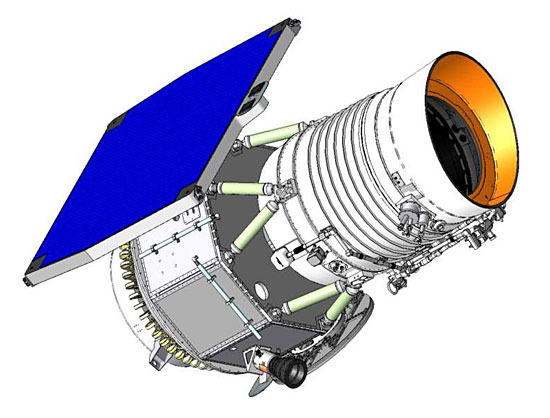 WISE is an unmanned satellite carrying an infrared-sensitive telescope that will image the entire sky. Since objects around room temperature emit infrared radiation, the WISE telescope and detectors are kept very cold (below -430° F /15 Kelvins, which is only 15° Centigrade above absolute zero) by a cryostat -- like an ice chest but filled with solid hydrogen instead of ice.
WISE is an unmanned satellite carrying an infrared-sensitive telescope that will image the entire sky. Since objects around room temperature emit infrared radiation, the WISE telescope and detectors are kept very cold (below -430° F /15 Kelvins, which is only 15° Centigrade above absolute zero) by a cryostat -- like an ice chest but filled with solid hydrogen instead of ice.
Solar panels provide WISE with the electricity it needs to operate, and always point toward the Sun. Orbiting several hundred miles above the dividing line between night and day on Earth, the telescope looks out at right angles to the Sun and always points away from Earth. As WISE orbits from the North Pole to the equator to the South Pole and then back up to the North Pole, the telescope sweeps out a circle in the sky. As the Earth moves around the Sun, this circle will move around the sky, and after six months WISE will have observed the whole sky.
As WISE sweeps along the circle a small mirror scans in the opposite direction, capturing an image of the sky onto an infrared sensitive digital camera which will take a picture every 11 seconds. Each picture covers an area of the sky 3 times larger than the full moon. After 6 months WISE will have taken nearly 1,500,000 pictures covering the entire sky. Each picture has one megapixel at each of four different wavelengths that range from 5 to 35 times longer than the longest waves the human eye can see. Data taken by WISE is downloaded by radio transmission 4 times per day to computers on the ground which combine the many images taken by WISE into an atlas covering the entire celestial sphere and a list of all the detected objects.
Total Ozone Mapping Spectrometer (TOMS)
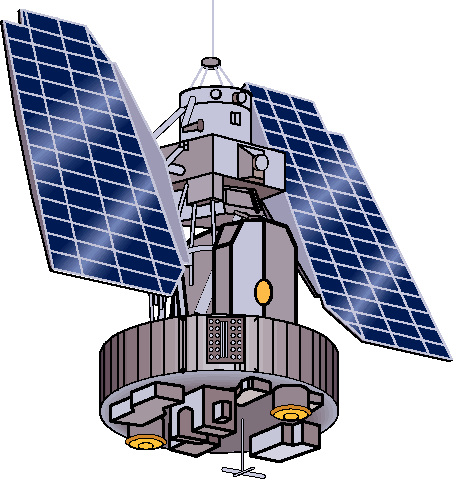 Launched in 1996, the Total Ozone Mapping Spectrometer (TOMS) satellite was expected to map and understand the magnitude of polar ozone depletion for two years. More than ten years later, it was still in orbit and providing valuable scientific data. Its life was extended thanks to the collaboration with SOI, whose students became lead controllers of the NASA spacecraft in 2002, first from Goddard Space Flight Center and then from a control center on campus.
Launched in 1996, the Total Ozone Mapping Spectrometer (TOMS) satellite was expected to map and understand the magnitude of polar ozone depletion for two years. More than ten years later, it was still in orbit and providing valuable scientific data. Its life was extended thanks to the collaboration with SOI, whose students became lead controllers of the NASA spacecraft in 2002, first from Goddard Space Flight Center and then from a control center on campus.
Using students for TOMS mission support reduced NASA’s operational cost from millions of dollars a year to a few hundred thousand dollars, making the extended mission operations possible. The partnership also gave the students an important hands-on learning experience. The Capitol Technology University team demonstrated that a small contingent of engineering students could perform a number of complex technical tasks well with limited subject-matter expert supervision.
In December 2006, TOMS had a catastrophic failure of the transmitter in its second transponder, resulting in the total loss of all data downlink capability and the termination of the mission. TOMS delivered some of the most critical and influential environmental data ever recorded, documenting the long-term decline of global atmospheric ozone and the emergence and development of the Antarctic ozone hole. It allowed the world to view and understand the ozone in a new way, helping to shape international environmental perspectives and policy.
Today, the work done by the TOMS program has been taken over by the Ozone Monitoring Instrument (OMI) aboard the Aura satellite. The Space Operations Institute TOMS Operations Team was recognized as a recipient of the prestigious William T. Pecora Award for developing innovative techniques for providing mission support and science data capture.
ERBS and UARS
The SOI took over operations for the Earth Radiation Budget Satellite (ERBS) and the Upper Atmosphere Research Satellite (UARS) upon receiving the Basic Grant from NASA in 2002. Both satellite operations were decommissioned in 2006, the process for which was accomplished without incident.
ERBS was part of the NASA's three-satellite Earth Radiation Budget Experiment (ERBE), designed to investigate how energy from the sun is absorbed and re-emitted by the Earth. This process of absorption and re-radiation was one of the principal drivers of the Earth's weather patterns. Observations from ERBS were also used to determine the effects of human activities (such as burning fossil fuels) and natural occurrences (such as volcanic eruptions) on the Earth's radiation balance. The other instruments of the ERBE were flown on NOAA 9 and 10.
The UARS satellite was launched in 1991 by the Space Shuttle Discovery to measure ozone and chemical compounds found in the ozone layer which affect ozone chemistry and processes. UARS also measures winds and temperatures in the stratosphere as well as the energy input from the sun. Together, these help define the role of the upper atmosphere in climate and climate variability. The satellite is 35 feet long, 15 feet in diameter, weighs 13,000 pounds, and carries 10 instruments. UARS orbits at an altitude of 375 miles with an orbital inclination of 57 degrees. Designed to operate for three years, six of its ten instruments are still functioning.
Landsat Data Continuity Mission (LDCM)
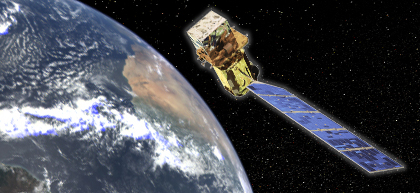 The Landsat Data Continuity Mission, or LDCM, is the eighth in the successful Landsat series and has launched in Feburary 2013. LDCM has a two-sensor payload that collects image data for nine shortwave bands plus two thermal bands. Landsat "provides the longest and most complete record on the state of the global land surface in existence" and is used for climate studies, mapping, erosion tracking, and many other uses.
The Landsat Data Continuity Mission, or LDCM, is the eighth in the successful Landsat series and has launched in Feburary 2013. LDCM has a two-sensor payload that collects image data for nine shortwave bands plus two thermal bands. Landsat "provides the longest and most complete record on the state of the global land surface in existence" and is used for climate studies, mapping, erosion tracking, and many other uses.
SOI students performed a variety of operations roles on-site at GSFC including telemetry page development, command and telemetry functional testing, tool integration, database and sysadmin support, and MOC and ground station network integration. SOI management partnered with LDCM to build new opportunities for training and learning for students as well as enhancing NASA operations. SOI support ended in August 2013.
For more information on SOI's partnership with LDCM, click here.
Magnetospheric Multiscale (MMS) Mission
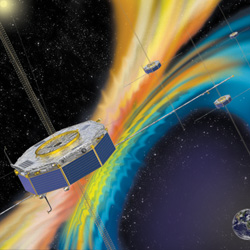 The Magnetoshperic Multiscale Mission, or MMS, investigates how the Sun’s and Earth’s magnetic fields connect and disconnect, explosively transferring energy from one to the other in a process that is important at the Sun, other planets, and everywhere in the universe, known as magnetic reconnection. Reconnection limits the performance of fusion reactors and is the final governor of geospace weather that affects modern technological systems such as telecommunications networks, GPS navigation, and electrical power grids. Four identically instrumented spacecraft measure plasmas, fields, and particles in a near-equatorial orbit that will frequently encounter reconnection in action.
The Magnetoshperic Multiscale Mission, or MMS, investigates how the Sun’s and Earth’s magnetic fields connect and disconnect, explosively transferring energy from one to the other in a process that is important at the Sun, other planets, and everywhere in the universe, known as magnetic reconnection. Reconnection limits the performance of fusion reactors and is the final governor of geospace weather that affects modern technological systems such as telecommunications networks, GPS navigation, and electrical power grids. Four identically instrumented spacecraft measure plasmas, fields, and particles in a near-equatorial orbit that will frequently encounter reconnection in action.
SOI students provided integration & testing (I&T) and Mission Operations Center (MOC) support until satellite launch in March 2015. Significant achievements included a widely-praised overhail of the trending spreadsheet with observatory testing data to enable other members of the MMS team better utilize their data.
For more information on SOI's partnership with MMS, click here. Read NASA's profile here.
Tropical Rainforest Measurement Mission (TRMM)
The Tropical Rainforest Measurement Mission, or TRMM, is a research satellite designed to help our understanding of the water cycle in the current climate system. By covering the tropical and semi-tropical regions of the Earth, TRMM provides much needed data on rainfall and the heat release associated with rainfall.
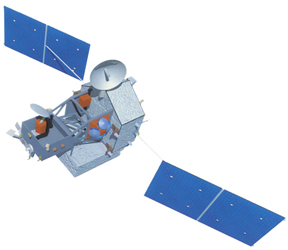 TRMM will not single-handedly provide the solution to the climate change debate - it will, however, contribute to our understanding of how clouds affect climate and how much energy is transported in the global water cycle. In coordination with other satellites in NASA's Mission to Planet Earth, TRMM will begin the process of understanding the interactions between water vapor, clouds and precipitation that is central to regulating the climate system.
TRMM will not single-handedly provide the solution to the climate change debate - it will, however, contribute to our understanding of how clouds affect climate and how much energy is transported in the global water cycle. In coordination with other satellites in NASA's Mission to Planet Earth, TRMM will begin the process of understanding the interactions between water vapor, clouds and precipitation that is central to regulating the climate system.
SOI students worked onsite at the Goddard Space Flight Center to operate the TRMM satellite, and later served as system administrators for the continuation of the mission. SOI students also redesigned the TRMM ground control system, releasing an application called iTRMM to facilitate systems management. Formal SOI support of the mission (and related Earth Observing System (EOS) Missions Operations Systems (EMOS)) ended in March 2016.
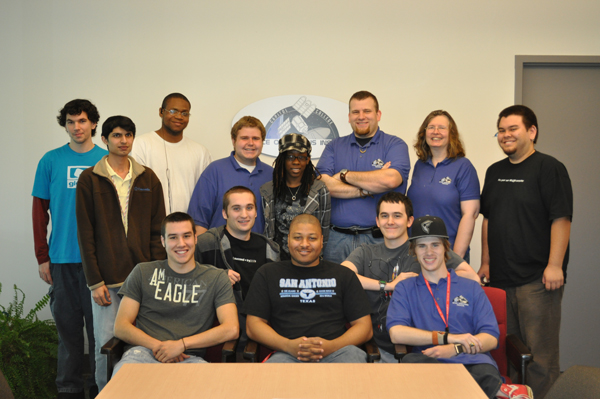
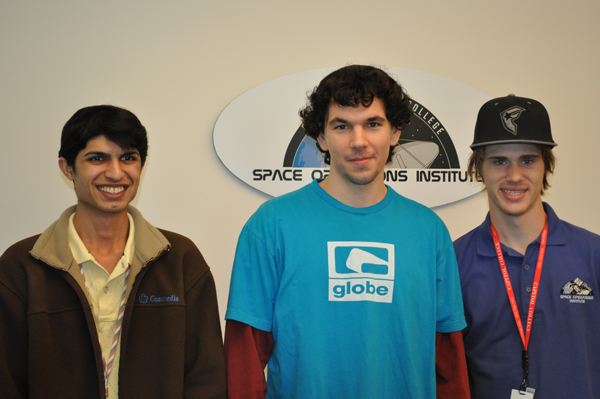
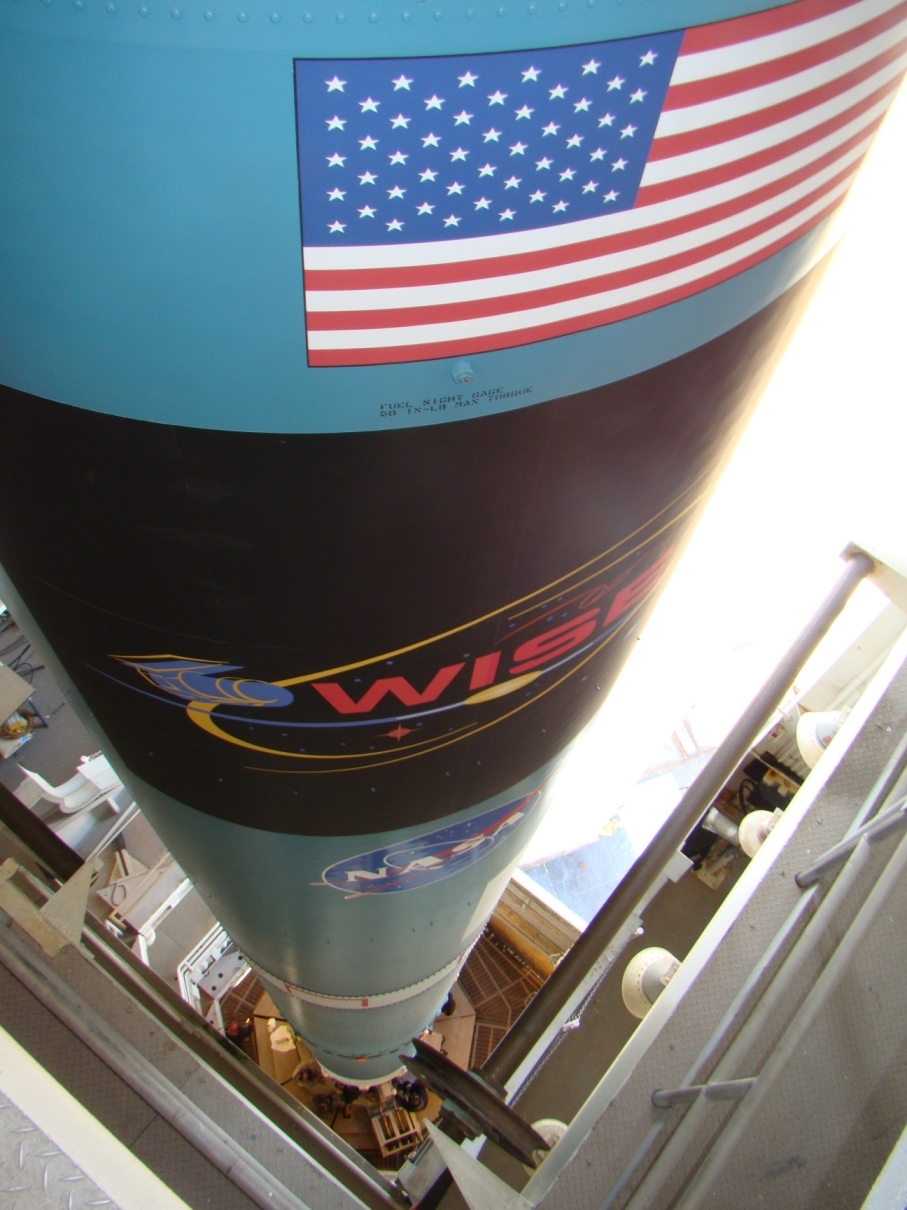
Note: The SOI is no longer operating in the below capacity as of 2013. Please direct questions about the legacy of the program to soi@captechu.edu.
System Administration
Capitol Technology University personnel, mainly students, were responsible for all information technology system administration of SOI furnished hardware and software. In 2002, Capitol Technology University also took over systems administration responsibilities for a majority of the non-SOI provided equipment in the Capitol Technology University operated control centers at Goddard Space Flight Center. Personnel were available to support operations anytime, day or night, if the need arose. All SOI systems administrators had to complete and pass the NASA offered courses on system administration security on a regular basis.
Faculty Leadership
Ken Dolan, Operations Manager
Responsible for: reports, student assignments, SOI database, administrative records
Andrew Exner, Contract Manager
Responsible for: reports, student assignments, SOI database, administrative records (following Ken Dolan's retirement)
Professor Angela Walters, Technology Manager
Responsible for: teaching, team leadership, software configuration, mission assurance
Assistant Professor Alex Antunes
Responsible for: teaching, mentoring, grants, new missions
Assisting Faculty
Professor Ashit Sanyal
Professor of Practice and resident faculty expert in astronomy. Prior to his retirement, he led the effort to construct an observatory at Capitol Technology University, and also supported the efforts to develop a master’s degree program in astronautical engineering and achieve ABET accreditation for the undergraduate AE program.
Professor Chuck Conner
Professor, who served as a technical consultant for SOI students working on development projects.
NASA Leadership
Ed Macie, NASA
Mission Manager and Technical Officer
Astronautical Engineering Advisory Board
http://www.captechu.edu/centers-excellence/space-operations-institute https://www.captechu.edu/centers-excellence/space-operations-institute/history https://www.captechu.edu/centers-excellence/space-operations-institute/mission-and-vision https://www.captechu.edu/centers-excellence/space-operations-institute/satellite-missions https://www.captechu.edu/centers-excellence/space-operations-institute/faculty-and-leadership



